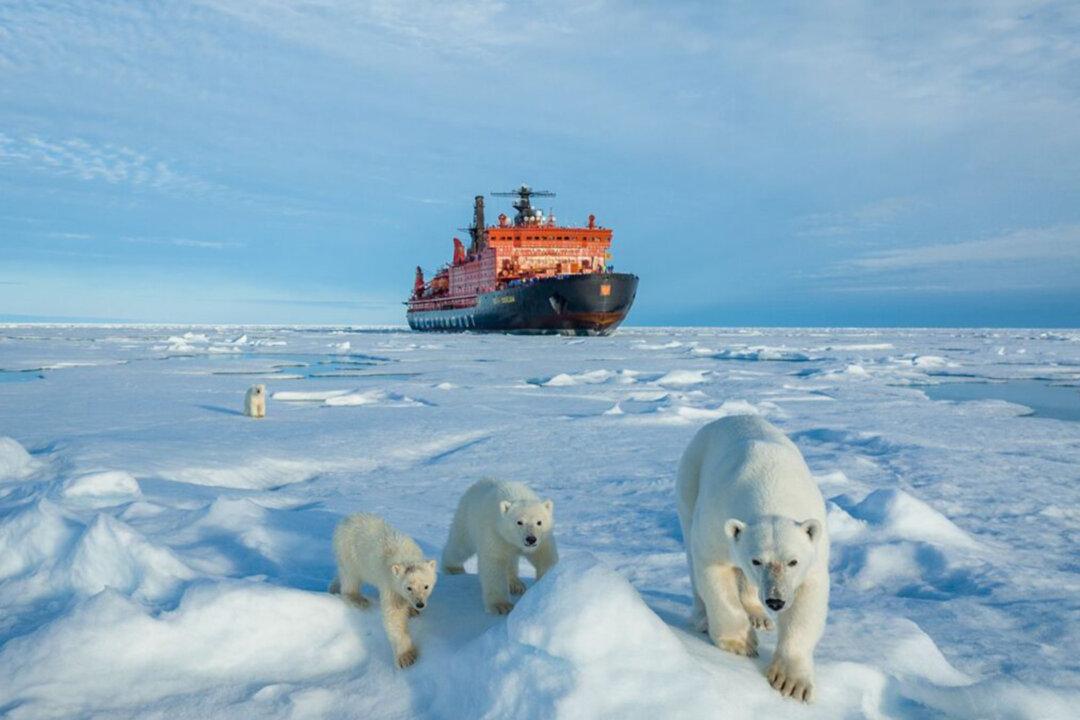During a cruise to the North Pole on a nuclear-powered icebreaker, a Russian wildlife photographer snapped a stunning series of photos of a mother polar bear and her three cubs. The rare sighting was instantly a cause for celebration.
An IT entrepreneur by day, Dmitry Kokh, 42, lives in Moscow and travels widely. He described his spring trip to the North Pole as “very exciting” as the birth of three cubs is a “rare occurrence in nature.”





